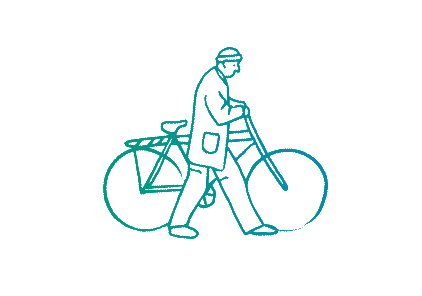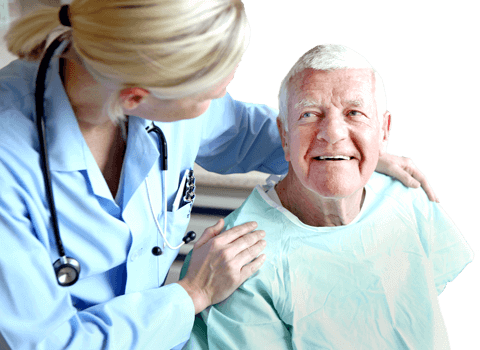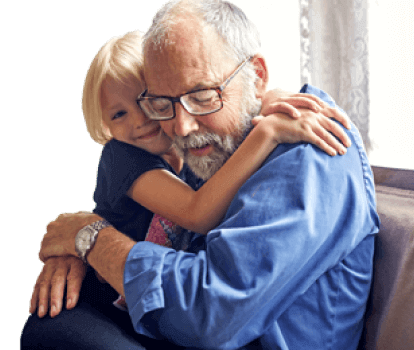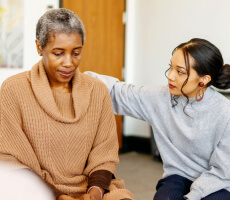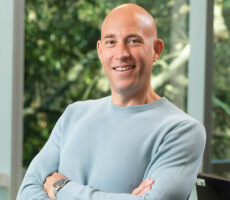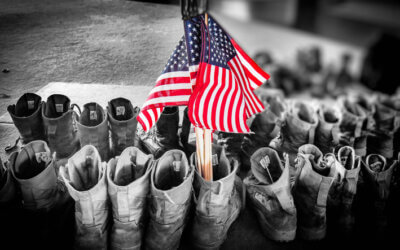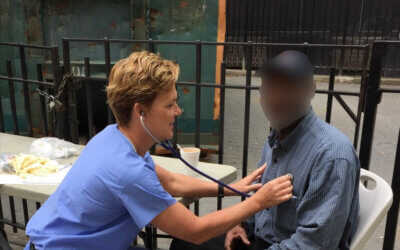Childhood Grief: The ABCs of Healing
Kristen Nardolillo, a licensed social worker and bereavement counselor with Cornerstone Hospice, shares her story of childhood grief and how she helps children and teens navigate the challenges of childhood grief.

It’s that time of the year again. In some places, the snow and frost set in and loved ones reunite to forge precious new memories. It’s the time of the year we cherish with family and friends, but it can also be a somber and painful reminder of those we lost when we were young. November is National Children and Teens’ Grief Awareness Month. In many ways, childhood grief is more challenging. Children and teens must process the various stages of grief all while their bodies and minds are still developing into adulthood. According to a childhood bereavement estimation model from Judi’s House for Grieving Children and Families, one out of 12 children in Florida will suffer the loss of a parent or sibling by age 18. Kristen Nardolillo, a licensed social worker and bereavement counselor for Cornerstone Hospice (an affiliate of Chapters Health System), shares her own personal story of childhood grief and how some of the children she works with now process their grief one letter at a time.
What was your experience with childhood grief?
Nardolillo: Fortunately for me, I did not lose my first family member until I reached adult age, however I do remember, quite vividly, the day my two-year-old dog Bubbles passed away in my late teenage years.
It was a normal Sunday morning at the Nardolillo household. Mom was watching the “Golden Girls” on television, Dad was finishing up a project at work, my sister was in her room getting ready for a playdate with her friend, and I was in the process of making myself some breakfast, when our doorbell rang.
Mom went to answer the door, as we were expecting my sister’s friend to arrive. The moment mom opened the door, without a second to think, my black lab, Bubbles, darted quickly out the door to frolic in the streets of our neighborhood. “Kris, go get your dog,” Mom yelled.
I ran out the door to go capture Bubbles and heard a horrifying scream coming from a woman in the distance. My heart felt like it did a backflip and sank into my gut. I knew something was wrong.
I frantically started running closer to where the sound of the scream came from. As I got closer, my mind couldn’t process the scene that lay before my eyes. Still half-alive, my dog Bubbles was laying in a puddle of her own blood in the middle of the street, panting and grasping to hold onto her life.
My heart ached. I laid next to Bubbles in the road, her eyes peering into mine, as I watched the aftermath of what had been a car accident. Tears started to flood my face. A neighbor stopped traffic while I screamed at the top of my lungs for help. People began to crowd. I held Bubbles’ head in my hands and wept as I watched her life force gradually slipping away from her body.
A man offered to help me get her in the bed of my truck to take her to the local vet. All I could do was nod my head “yes.” The kind man graciously picked her up off the concrete, without a care that her blood was staining his shirt, and carefully placed Bubbles into the bed of my truck. I began to hyperventilate. Bubbles was unresponsive at this point. I pleaded to God for him to save her.
We arrived at the local vet in about five minutes time. They rushed her inside and laid her on their operating table. I wasn’t allowed to go back, although it took everything in me not to run back there to be with her. My mom helped calm me by telling me to breathe deeply. Not even five minutes later, the vet came out with a somber expression on her face. She told us the bad news. The vet’s words felt like a million knives penetrating my heart. I buried my face in my hands and involuntarily wept. The vet staff offered for me to come back and see her body one last time to say goodbye. The moment I laid eyes on her more tears began to flow down my cheeks. “I’m so sorry Bubsy… I love you so much,” is all I could manage to say.
Later we found out that the man who had hit Bubbles left the scene because he had his five-year-old son in the car with him. The man quickly drove his son home, so he wouldn’t have to witness the horrific scene, then quickly drove back to the spot where he hit Bubbles, but by that time we were already at the vet.
I spent the next few days in my room, crying, mourning, thinking and cuddling with my other dog, Spyro. So many feelings had hit me so suddenly in such a short period of time. I truly felt like I would never recover. I felt anger, guilt, sadness, despair and a host of other emotions that I could not put into words at that time. My life surely hadn’t ended, but I couldn’t help but believe a part of my life left with my sweet Bubbles.
What did you learn about childhood grief from this experience?
Nardolillo: I was forced to learn some big life lessons about forgiveness. It felt painful blaming the man behind the wheel of the car for the outcome of my dog’s death. But I learned in time that forgiving him provided me with much more peace than blaming him ever did. I had to forgive my mom, for not being able to stop Bubbles from getting out the door in time. I had to forgive Bubbles, for having the spirit of a small puppy who loved nothing more than to run free each chance she could. And of all the people I had to forgive, forgiving myself seemed to be the hardest of all tasks. I blamed myself the most for what happened that day. In time, I allowed myself to heal through forgiveness, knowing that I never intended for this to be the outcome.
What have you learned from the children you provide bereavement support to at Cornerstone Hospice?
Nardolillo: I have asked my child and teenage clients to share words and phrases starting with each letter of the alphabet that best represent their unique journey through childhood grief. Here are some of their responses:
A – “Angels are watching over me”
B – “Bad days”
C – “Crying”
E – “Everyone loses someone they love”
F – “Feeling lost”
N – “Never Alone”
O – “Overwhelming”
P – “Picking up the pieces”
What is the takeaway from that exercise?
Nardolillo: Loss comes in so many different forms and there is no “right” or “wrong” way to feel. No loss is greater or lesser than another. But I do believe that with the right support, we can come out of these experiences with greater insight into ourselves and what makes us human.
Chapters Health System is committed to serving the needs of its patients, families, caregivers, health providers, partners, and communities.
For more information, please call our helpful Chapters Health and HospiceHelp24® team at 1.866.204.8611 or Contact Us.
Keep Exploring
